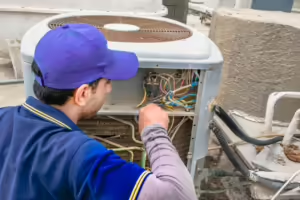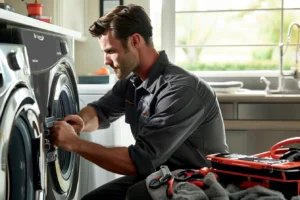As much as we’d love for our home appliances to last forever, there comes a time when even the most reliable fridge or washer starts showing its age. Whether it’s a funky noise, an unexplained spike in energy bills, or appliances that just aren’t working as well as they used to, knowing when it’s time to replace them can save you time, money, and headaches. But how do you know when to repair versus replace? Let’s break down the signs that indicate it might be time to retire your old appliances and welcome shiny new ones into your home.
Age Matters: The General Lifespan of Appliances
Before jumping into the signs of wear, it’s helpful to know the typical lifespan of common household appliances:
- Refrigerator: 10-15 years
- Dishwasher: 8-12 years
- Washing Machine: 8-12 years
- Dryer: 10-13 years
- Oven/Stove: 10-15 years
- Microwave: 7-10 years
- Water Heater: 8-12 years
If your appliance is nearing the end of its expected lifespan, it might be time to start thinking about a replacement—especially if you’re seeing performance issues.
Rising Energy Bills
One of the biggest signs it’s time to replace an appliance is a sudden increase in your energy bills. Older appliances tend to lose efficiency over time, working harder to achieve the same results, which leads to higher energy usage. For instance, a fridge that’s struggling to maintain its temperature will run constantly, consuming more power.
Many newer models are ENERGY STAR® certified, meaning they use significantly less energy than older appliances. Replacing an old, inefficient appliance with an energy-efficient one can not only reduce your environmental impact but also save you money in the long run.
Frequent Repairs
If your appliance has turned into a money pit for repairs, it’s likely time to replace it. The “50% rule” is a good guideline—if the cost of repairing the appliance is more than 50% of the cost of buying a new one, it’s probably time to invest in a replacement.
For example, if your washing machine is eight years old and a repair will cost you $300, you might want to consider putting that money toward a new, more efficient model instead.
Strange Noises
Unusual noises are often a telltale sign that something’s wrong with your appliance. A refrigerator making loud humming or clunking noises, a dryer that’s squealing, or a dishwasher with a grinding sound can signal mechanical problems. While some noises can be fixed with simple repairs, recurring strange sounds might indicate more serious issues that can lead to expensive repairs down the road.
When in doubt, it’s a good idea to consult with a technician. If they suggest multiple costly fixes, you’re better off replacing the appliance.
Poor Performance
When your appliances aren’t doing what they’re supposed to, it’s a sign they may be reaching the end of their lifespan. For instance:
- Refrigerator: Is your food spoiling faster than usual? Are certain areas colder than others? These issues could indicate failing components like the compressor.
- Washing machine: If your clothes aren’t coming out as clean, or the machine doesn’t fully drain, it’s time to check if the drum or motor is wearing out.
- Oven: If your oven is taking longer to preheat, unevenly cooking food, or constantly fluctuating in temperature, it might be time to replace it.
If your appliance is no longer performing efficiently or as effectively as it once did, a new model could improve your daily routine while saving you time and energy.
Visible Signs of Wear and Tear
Cosmetic damage doesn’t necessarily mean an appliance is failing, but if you notice significant wear and tear, rust, cracks, or broken parts, it could be a sign that the appliance is past its prime. Rust on a fridge, for instance, can affect how well it seals, leading to inefficiency. Similarly, cracked or damaged internal components can lead to bigger problems, like leaks or electrical malfunctions.
Take note of these visual cues, as they could be warnings that the appliance is nearing the end of its life.
Safety Concerns
Your safety always comes first. Appliances that show signs of malfunction, such as sparking, burning smells, or overheating, should be immediately unplugged and inspected. For example, a malfunctioning dryer that overheats can be a serious fire hazard. If you’ve had multiple instances of safety issues, it’s a strong indication that it’s time for a replacement.
Outdated Technology
While functionality and safety are top priorities, sometimes it’s worth replacing appliances simply because they’re outdated. Newer models often come with technological advancements that can make your life easier and your home more efficient.
- Smart Appliances: Many modern appliances come with smart technology that allows you to control and monitor them remotely via your smartphone. Whether it’s checking the status of a load of laundry or preheating your oven before you get home, smart appliances can add convenience to your day.
- Energy Efficiency: As mentioned earlier, newer appliances are built to use less energy and water. If your appliances are decades old, upgrading to more efficient models can help you reduce your carbon footprint and lower your utility bills.
Difficulty Finding Replacement Parts
As appliances age, finding replacement parts can become more difficult—and more expensive. If your appliance requires a part that’s hard to track down or costs more than a third of the appliance’s value, it may be more economical to purchase a new model. Manufacturers eventually stop producing parts for older models, and once this happens, even a small issue can render the appliance unusable.
Conclusion: Time for an Upgrade?
Knowing when to replace your old appliances can save you from costly repairs, high energy bills, and safety hazards. Keep an eye on performance issues, increasing energy use, and safety concerns. When you decide it’s time for an upgrade, consider investing in energy-efficient, modern appliances that will improve your home’s functionality and help reduce your environmental footprint. With the right approach, you can make your home more efficient, safe, and comfortable!









